Have you ever wondered how long it takes for your carpet to dry after a professional cleaning? We discuss the factors that affect drying time and provide tips on how to speed up the process.
Learn about using fans, opening windows, and other ways to ensure your carpet dries quickly and efficiently. Discover the importance of proper drying to prevent issues like mold growth and carpet damage.
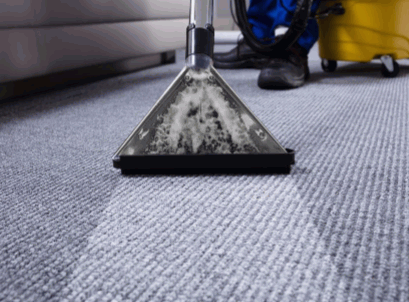
How Long Does Carpet Cleaning Take?
The duration of carpet cleaning varies depending on the size of the area, the extent of dirt or stains, and the cleaning method used.
The surface area of the carpet plays a significant role in determining the time needed for cleaning. Larger carpets naturally require more time compared to smaller ones.
The level of soiling is crucial; the more embedded the dirt and stains, the longer it may take to achieve a thorough cleaning. Professional cleaning services often use advanced techniques like hot water extraction or steam cleaning, which can effectively remove deep-seated grime.
Proper care and regular maintenance are essential to prolong the lifespan of carpets and ensure a clean and hygienic environment in your living spaces.
Take a look: Can You Clean A Suede Couch With A Carpet Cleaner
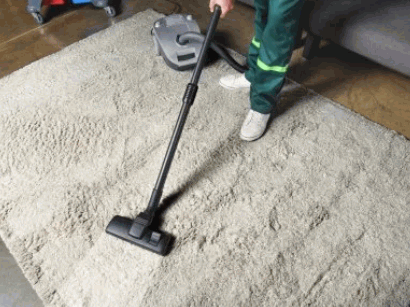
What Is The Drying Time For Carpet Cleaning?
The drying time for carpet cleaning can range from a few hours to a day, depending on factors like humidity levels, ventilation, and the type of cleaning method applied.
To speed up the drying process, it’s essential to increase airflow in the room by opening windows or using fans. Using a carpet cleaner with a powerful suction capability can help extract more moisture, reducing drying time. Sanitation considerations play a crucial role in ensuring that carpets are not only clean but also free from mould and odours.
To prevent mould growth, it’s important to thoroughly dry the carpet before placing the furniture back on it. Regular vacuuming and periodic professional carpet cleaning also aid in maintaining cleanliness and prolonging the life of your carpet.
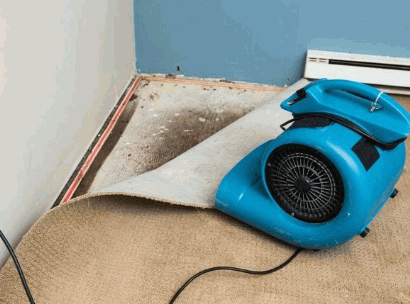
Factors That Affect Drying Time
Several factors influence the drying time of carpets after cleaning, including the level of moisture removal, the effectiveness of drying techniques employed, any additional carpet treatments applied, and the use of protective coatings.
When it comes to moisture removal methods, the choice between air drying and mechanical drying plays a vital role in determining how quickly a carpet dries. Air drying, although a slower process, is known for its gentle approach, making it ideal for delicate fibres.
On the other hand, mechanical drying techniques such as using fans and dehumidifiers offer faster results but require careful monitoring to prevent over-drying. Specific carpet treatments, like antimicrobial solutions, can aid in the drying process by inhibiting mould and mildew growth.
Applying protective measures, such as stain-resistant coatings, not only helps in prolonging the carpet’s lifespan but also assists in maintaining its fresh appearance post-cleaning.
How Can You Speed Up The Drying Process?
To accelerate the carpet drying process, consider using fans or air movers, opening windows and doors for ventilation, adjusting air conditioning or heating settings, and utilising dehumidifiers.
After a thorough carpet cleaning, it is essential to blot any excess moisture on the carpet surface immediately using clean towels or cloths. This step helps to remove as much water as possible before proceeding with the drying methods. Ensure that the area where the carpet is placed is well-ventilated to allow the moisture to evaporate quickly. Avoid walking on the damp carpet to prevent further soiling and to maintain cleanliness. By implementing these quick-dry techniques and protective measures, you can effectively expedite the drying process and uphold the hygiene and longevity of your carpet.
Use Fans Or Air Movers
Fans or air movers can significantly aid in speeding up the carpet drying process by enhancing air circulation and promoting faster evaporation of moisture from the carpet fibres.
This expedited evaporation not only helps in reducing the risk of mould and mildew growth in the carpet but also improves overall carpet hygiene.
By using fans strategically, you can ensure that the entire carpet surface receives adequate airflow, leading to a more uniform drying process.
To optimise the drying efficiency, position the fans in a way that creates a cross-flow of air over the carpet. It’s also beneficial to elevate the carpet slightly by placing it on blocks or using towels underneath to allow better air exposure.
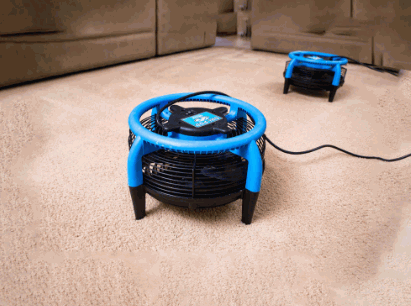
Open Windows And Doors
Opening windows and doors allows for increased airflow, aiding in the natural drying process of carpets and ensuring proper ventilation to prevent moisture retention.
This flow of fresh air not only helps accelerate the drying of carpets but also plays a crucial role in maintaining their hygiene. Natural ventilation assists in preventing the growth of mould and mildew, which thrive in damp environments.
Allowing air circulation through open windows and doors supports regular carpet maintenance efforts and complements household cleaning routines. By letting in the fresh air, you can effectively remove musty odours and promote a healthier indoor environment.
This simple practice of ventilation through open windows and doors is a valuable ally in keeping your carpets clean and fresh.
Turn On The Air Conditioning Or Heating
Utilising air conditioning or heating systems can expedite carpet drying by regulating the indoor temperature and humidity levels, facilitating faster evaporation of moisture from the carpet fibres.
Maintaining quick dry times is essential for preventing mould growth and musty odours in carpets. The controlled climate created by air conditioning or heat helps in preserving the integrity of carpet fibres, preventing potential damage or discolouration. In addition, proper carpet care practices are supported as quicker drying reduces the risk of bacterial growth and prolongs the lifespan of the carpet. To optimise drying efficiency, recommended temperature settings typically range between 70-80 degrees Fahrenheit, ensuring effective moisture removal without causing any adverse effects.
Use A Dehumidifier
Employing a dehumidifier can aid in moisture removal from the air, reducing humidity levels and accelerating the drying process of carpets, especially in high-moisture environments.
This not only helps in preventing mould and mildew growth but also enhances the overall air drying conditions, making it more conducive for drying wet carpets effectively. By using a dehumidifier alongside other drying techniques like proper ventilation and targeted carpet treatments, such as antimicrobial solutions, the drying process can be significantly optimised. The strategic placement of dehumidifiers in key areas can support efficient moisture control, ensuring that the carpets dry thoroughly and quickly, thereby minimising the risk of moisture-related damage.
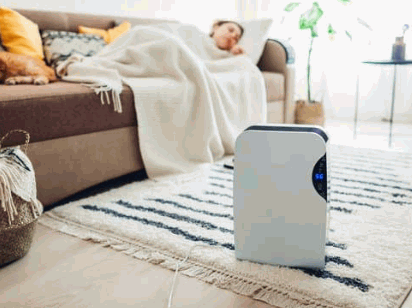
What Happens If The Carpet Doesn’t Dry Properly?
Failure to properly dry the carpet after cleaning can lead to consequences such as persistent dampness, increased risk of mould and mildew growth, lingering musty odours, stubborn carpet stains, and potential damage to the carpet fibres and underlying flooring.
Not only does the presence of moisture in carpets create a conducive environment for mould and mildew to flourish, but it also poses health risks to inhabitants due to potential allergens and respiratory issues. The musty odours that result from inadequate drying can be challenging to eradicate and may permeate the entire space. Wet carpets are more prone to developing stubborn stains, which can be difficult to remove if not addressed promptly. Failure to thoroughly dry carpets can lead to structural damage, affecting both the carpet and the flooring underneath. To combat these issues, utilising effective stain removal methods and ensuring thorough carpet drying is essential for maintaining carpet quality and preventing long-term damage.
Mold And Mildew Growth
Insufficient carpet drying can create a conducive environment for mould and mildew to proliferate, posing health risks and requiring extensive water extraction, specialised carpet treatments, and thorough cleaning to address the issue effectively.
In addition to health risks, mould growth on damp carpets can also lead to unpleasant odours, structural damage, and deterioration of the carpet fibres. To prevent mould and mildew issues, it is crucial to address water damage promptly and thoroughly extract any excess moisture from the carpet. Utilising appropriate carpet treatments, such as antimicrobial solutions, can help inhibit microbial growth and protect the carpet from further contamination.
Regular maintenance and proper ventilation are essential to ensure optimal carpet hygiene and prevent mould-related problems from arising. If mould is already present, professional remediation services may be necessary to eliminate it and restore the carpet’s cleanliness and condition.
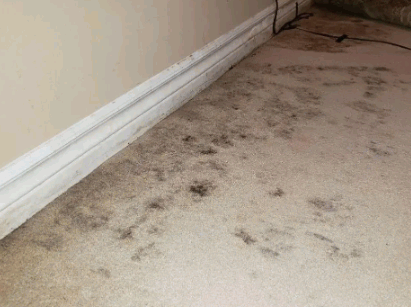
Musty Odours
Carpeting that remains wet for extended periods can develop musty odours due to bacterial growth and mould formation, necessitating thorough carpet sanitation, enhanced hygiene practices, targeted stain removal, and regular cleaning to eliminate the malodorous effects.
These musty odours not only impact the air quality in your home but also pose potential health risks, especially for individuals with respiratory issues. To tackle the unpleasant scents effectively, it is crucial to address the root causes by ensuring proper ventilation to aid in drying out damp carpets promptly. Using specialised carpet cleaners and deodorisers can help neutralise the odours, while regular vacuuming and ensuring pets are clean can also play a significant role in maintaining fresh-smelling carpets.
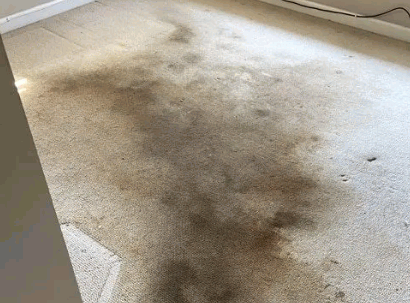
Damage To The Carpet And Flooring
Prolonged exposure to moisture from improper drying can harm carpets and flooring, leading to issues such as carpet discolouration, warping, mould infestation, deterioration of carpet materials, and structural damage to the underlying floor surfaces.
This not only affects the visual appeal of the carpet but also compromises its integrity and longevity. Different carpet materials, such as wool, synthetic fibres, or blends, react differently to moisture, making some more vulnerable to damage.
Inadequate drying can also significantly impact the effectiveness of cleaning methods, as mould growth and odours may persist if moisture is not properly removed. Therefore, it is crucial to implement proper carpet care practices, including thorough drying after cleaning or water exposure, to prevent irreversible harm.
To safeguard carpets and flooring from moisture-related damage, consider using dehumidifiers, and fans, and ensuring proper ventilation to expedite the drying process and maintain a healthy indoor environment.
How Long Should You Wait Before Walking On The Carpet?
After carpet cleaning, it is advisable to wait until the carpet is completely dry before walking on it to prevent the risk of re-soiling, maintaining a clean and dry surface, and ensuring the longevity of the carpet fibres.
Allowing the carpet to adequately dry after cleaning is crucial for several reasons. A sufficient drying period ensures that any residual moisture is completely evaporated, preventing the growth of mould and mildew. Walking on a damp carpet can lead to the transfer of dirt from shoes, potentially re-soiling the cleaned surface.
To verify if the carpet is dry, gently touch the fibres – if they feel the cool or damp, more drying time is needed. A good practice is to check the carpet’s dryness by placing a paper towel on it; if the paper towel remains dry, it’s safe to resume regular foot traffic.
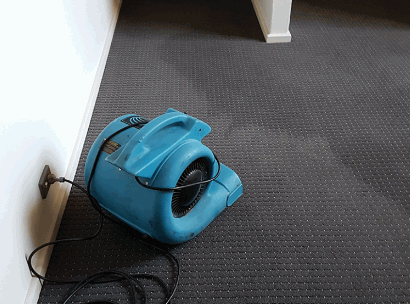
How Long Does It Take For Carpet To Dry After Steam Cleaning?
The drying time following steam cleaning can vary based on factors like humidity levels, room temperature, airflow, carpet thickness, and the extraction efficiency of the steam cleaning equipment used.
High humidity levels often prolong the drying process as moisture has a harder time evaporating into the already moisture-saturated air. Similarly, room temperature plays a vital role; warmer temperatures facilitate quicker evaporation. Adequate airflow aids in moisture removal, accelerating the drying of carpets. Thicker carpets tend to retain more water, prolonging drying times. Efficient extraction during cleaning helps in removing excess water, reducing the overall drying duration. Proper care, including regular vacuuming and maintenance, can enhance drying efficiency and extend the lifespan of carpets.
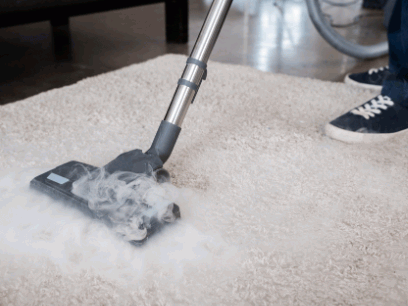
Tips For Faster Drying After Steam Cleaning
To accelerate the drying time after steam cleaning, consider implementing quick-dry techniques, using protective coatings for enhanced carpet protection, adhering to industry standards for optimal drying practices, maintaining carpet hygiene to prevent microbial growth, and following recommended carpet care guidelines.
One effective way to expedite drying is by increasing ventilation in the room post-cleaning, such as opening windows or using fans. Blotting excess moisture with clean towels or a wet/dry vacuum can help extract water from the carpet fibers. It’s crucial to avoid walking on the damp carpet to prevent further saturation and to place furniture pads or aluminum foil under furniture legs to avoid any furniture stains. Investing in a dehumidifier can also aid in reducing moisture levels in the room and speeding up the drying process.